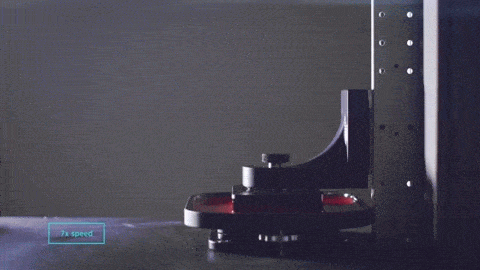Science Nonfiction at SXSW
March 3, 2016
Steve Vassallo
On March 13th, at SXSW, Foundation Capital and Product Hunt are going to be getting tangled up in protein silk inspired by spider webs, and seeing the technology that comes pretty close to allowing you to build a Terminator T100. No, it’s not Spider-Man or Skynet, but it is science fiction becoming science reality becoming business reality.
And if you’re interested, you can learn more about the event and RSVP here.
David Breslauer, Co-Founder & CSO of Bolt Threads is reimagining how to produce textiles and bring them to market by engineering polymers inspired by spider silk. These new fibers can be stretchier than spandex, stronger than steel, or softer than wool, depending on how Bolt Threads tunes the properties during the manufacturing process. Bolt Threads has succeeded where many others have failed by figuring out how to produce these fibers efficiently and at scale.
Kirk Phelps is VP of Product at Carbon, which has come up with the breakthrough that 3D printing has been waiting for. Carbon’s insight is that if we can grow parts rather than printing them layer by layer, not only would we be able to produce objects up to 100 times faster, but those materials could be smooth, stable, consistently replicable geometrics that have literally never been possible to construct before. The idea was actually inspired by that scene in Terminator 2: Judgment Day when the T1000 robot rises out of liquid metal.

In reality it actually works a lot like that.

Very cool stuff.
Both of these companies have developed entire technology platforms that have the potential to create whole new categories of products. Again, you can learn more about the event and RSVP here.
As exciting as each of their technologies is, one of the things that excites me most about these companies is that both of them are being built for the long term. (I’ve referred to these as two-marshmallow companies.)
Neither Bolt Threads nor Carbon will change the world in the next quarter. They still have a lot of work ahead of them to prime the market for an entirely new kind of product. And they have to figure out how to bring a physical, manufactured product to market.
But the fact that these companies are creating entirely new markets is exactly what makes them so promising in the long term.
With that in mind, I plan to ask David and Kirk about what it means to build an enduring technology and market innovation.
How is it different to build a company that’s creating an entirely new market, rather than finding a place in—or reshaping—an old one? How do you account for the applications and implications you haven’t even thought of yet?
And with a long-term vision and process, how do you ensure that you don’t enter the market too early, or spend your capital too fast?
How do you act with the fierce urgency of now, while still pacing yourselves for the long run?
These are a few of the questions and topics I’m keen to discuss with these two fascinating and exciting companies.
But more importantly, I’m interested in what questions you want to ask about our new #ScienceReality. Perhaps you have an angle on the long-term nature of these companies that I haven’t thought of yet. Or maybe you just want to hear more about #SpidersAndTerminators. Whatever your question is, I want to hear it. Tweet them to me at @Vassallo, so we can all learn about what the future looks like from the people who are building it right now.